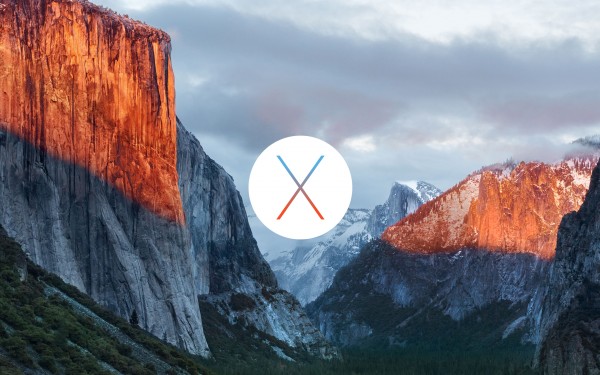
Once again we are presented with Apple’s fancy, annually “updated” operating system. This year, in keeping with last year’s name, Yosemite, comes El Capitan, one of the most famous areas within California’s Yosemite National Park. Simply based on the name, OS X Capitan seems to be an advancement over the original Yosemite system. As you may remember from last year’s upgrade of OS X Yosemite, it was a dramatic leap in design, speed, and function from its predecessor, Mavericks. Gaining criticism for loss of originality and the emergence of bugs in the system, Yosemite was not widely accepted by the public, despite its appealingly free price of installation. Not until these bugs were fixed were the majority of Macintosh users able to stop holding their breath for the upgrade, and finally take on the highly advanced Yosemite. As we are at this point of the year again, we are left with the question: should we upgrade to OS X El Capitan, or not?
![]()
To make such decision requires responsibility and deliberation, especially for those Mac users who do not usually tweak their operating systems, and have no idea what the application Terminal does for their computers. Well, I believe that most of us are not computer geniuses, including myself, and if you are, then you probably have no reason to read this article. So, for the majority of Mac users who have not done much research about the new operating system, Apple has introduced to us several of the major changes made to create El Capitan.
First of all, there is split view. If any of you have used Windows on a tablet before, you may be chuckling at how “advanced” this function is. What split view does is sort out the applications that are open on your desktop, and then show you all of them so that you can find what you need, rather than moving one tab to the side to dig out that application lying on the bottom. Another notable change that not many people would notice without reading Apple’s introduction to El Capitan is the change made to the search function, also known as Spotlight. From last year’s upgrade to Yosemite, Mac users were given the ability to look up Wikipedia pages or calculate simple equations just by opening the search bar. This year, Apple has taken their searching game up an entire level by adding on the functions to look up the weather, sports scores, and even using your own language to find a document that you forgot the name of. Yes, we all do have that moment where we forget the name of our own documents. Other than the upgrade to Spotlight, and the addition of split view, Apple has also made adjustments to different applications including Mail, Safari (which honestly, many of us never actually use), and also photos. In conclusion, the upgrade from Yosemite to El Capitan is built into its name, just a step up in the same park.
Some may be wondering why we should be afraid to have this small upgrade on our Macintosh. The answer is quite simple: because its not fully developed yet. OS X El Capitan has gone through many beta versions to find all of the glitches within the system, but months of doing so has still left the official version with many potential threats to users. Similar to the initial update of Yosemite, many new El Capitan users found themselves experiencing WiFi issues, including extremely slow speed and dropping connections. Many of us use our computers simply to get onto the internet, but what use is a new OS if we are not able to access the worldwide web properly?
Other than the bugs that the operating system itself could contain, not every single Mac user understands the process of upgrading their Mac. It starts out with a simple procedure of getting onto the App Store and downloading the operating system, El Capitan. Then, the Mac itself will lead you through the upgrading process step by step. The process may seem harmless itself since it only requires a few clicks, and typing in your admin password; however, many users have reported being unable to finish the upgrading process, freezing their laptops causing them to either restart the installation process or wiping out all of their data for a fresh install. Nobody wants to jeopardize their existing data, as it may be important for studies, work, and personal life. If you have no other way to prevent yourself from upgrading to El Capitan, just remember to back up all your data.
Clicking that update button is not in any way close to detonating a bomb, but it can be similar to running through a wide open minefield. There are potential threats in the operating system that may unexpectedly harm inexperienced Mac users, and even potentially bring damage to the hardware of computers. El Capitan probably will not destroy your Macintosh computer, but there is always a small chance, especially for those who lack digital technology knowledge. On the other hand, the upgrade from Yosemite to El Capitan is also a massive improvement in operating speed from 1.4 for 4 times increase in speed according to Apple. You can choose to have the desirable upgrades to your Mac, while risking the existence of any bugs, or just wait like others for a secured updated release of the OS.